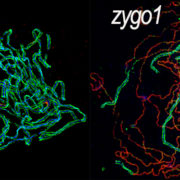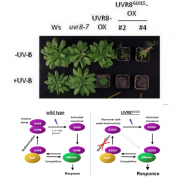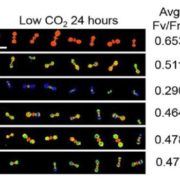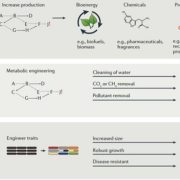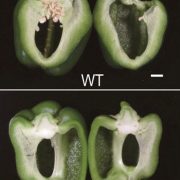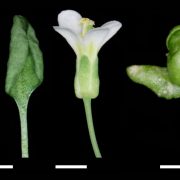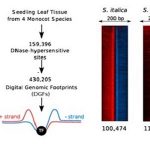Review: Revolutions in agriculture chart a course for targeted breeding of old and new crops ($) (Science)
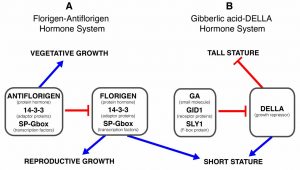 A few traits are associated with domestication across many species. Eshed and Lippman provide an overview of the changes to plant stature and flowering time that have been repeatedly selected by our ancestors. By comparing the molecular underpinnings of these traits across crops, it becomes clear that many different genes can contribute to the desired phenotypes; for example, florigens and antiflorigens have been subjects for selection, as have genes affecting different parts of the gibberellin signaling and respones pathway. In addition to large-effect domestication genes, ongoing breeding has optimized traits particularly for geographical regions through selection on small-effect, modifying genes. The authors point to the potential of gene editing to not only improve crop resiliency to climate change, but also to rapidly improve underutilized crops (such as teff) through alterations in architecture and flowering time. (Summary by Mary Williams) Science 10.1126/science.aax0025 (Note: these topics are also discussed in a recent Teaching Tool in Plant Biology, “Molecular control of plant shoot architecture” written by Agustin Zsögön and Lázaro Eustáquio Pereira Peres).
A few traits are associated with domestication across many species. Eshed and Lippman provide an overview of the changes to plant stature and flowering time that have been repeatedly selected by our ancestors. By comparing the molecular underpinnings of these traits across crops, it becomes clear that many different genes can contribute to the desired phenotypes; for example, florigens and antiflorigens have been subjects for selection, as have genes affecting different parts of the gibberellin signaling and respones pathway. In addition to large-effect domestication genes, ongoing breeding has optimized traits particularly for geographical regions through selection on small-effect, modifying genes. The authors point to the potential of gene editing to not only improve crop resiliency to climate change, but also to rapidly improve underutilized crops (such as teff) through alterations in architecture and flowering time. (Summary by Mary Williams) Science 10.1126/science.aax0025 (Note: these topics are also discussed in a recent Teaching Tool in Plant Biology, “Molecular control of plant shoot architecture” written by Agustin Zsögön and Lázaro Eustáquio Pereira Peres).


